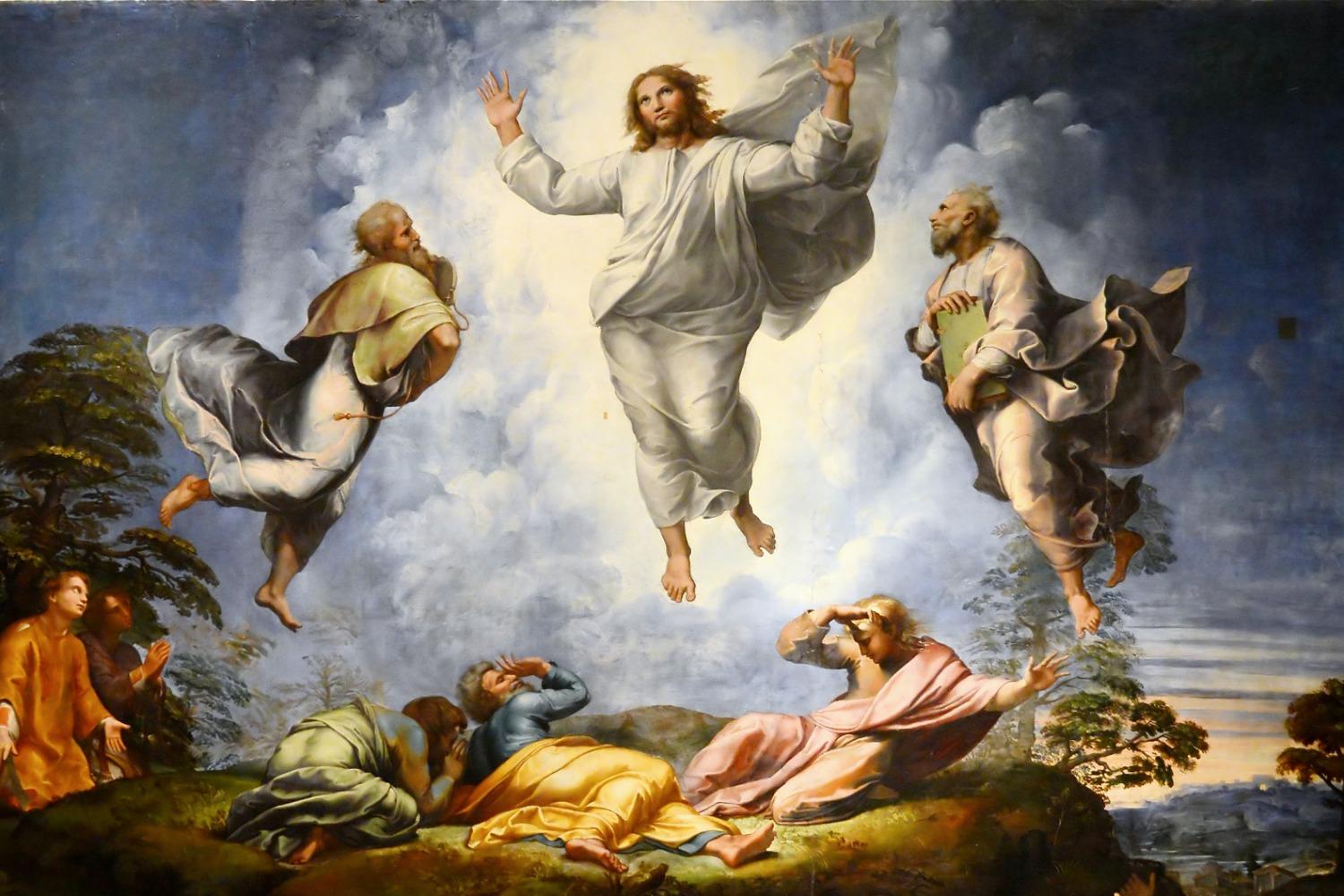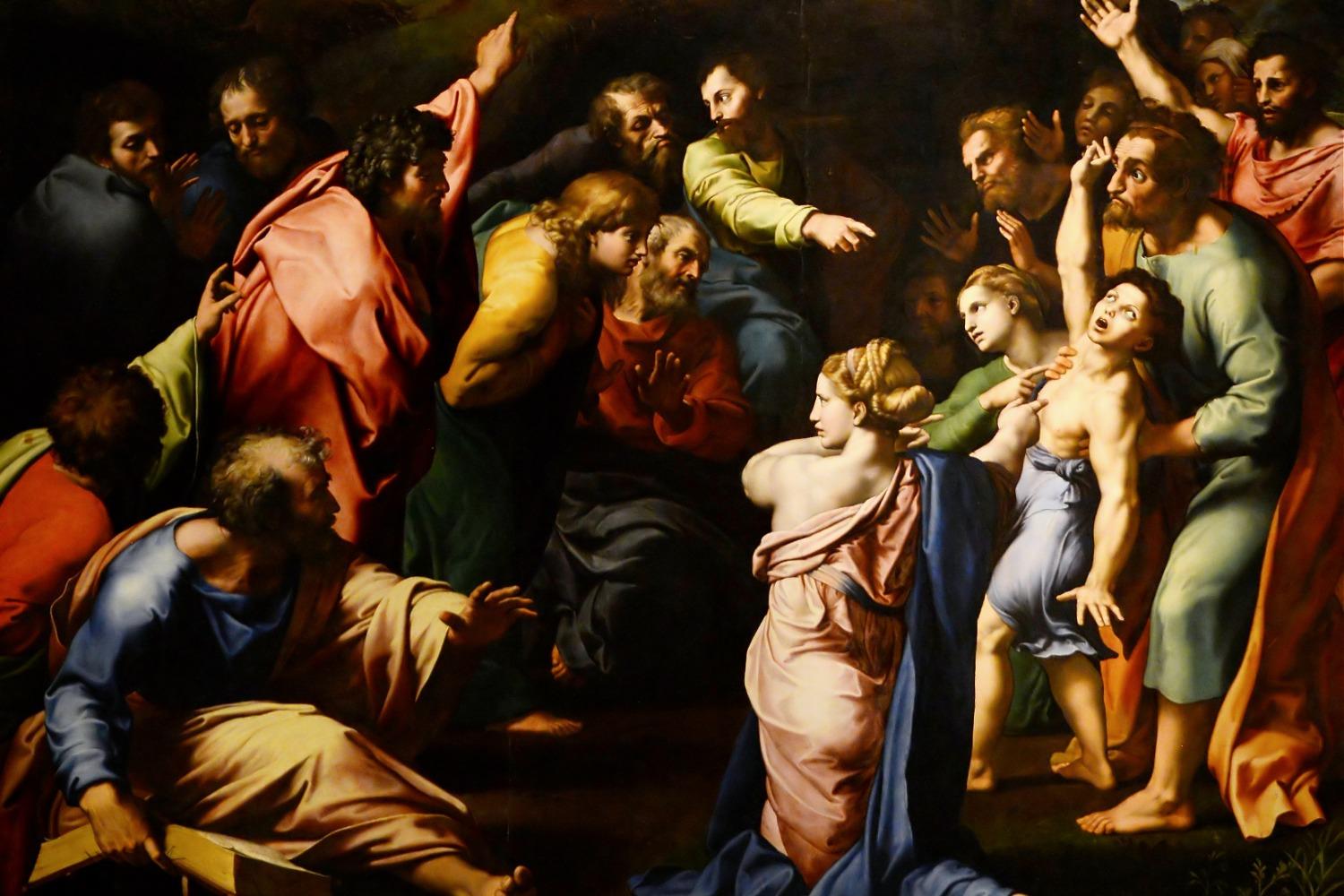
Raphael, a famed Italian artist who lived at the turn of the sixteenth century, died on Good Friday at the age of 37, having received the sacraments on his deathbed. It is said that he asked that his nearly complete painting, The Transfiguration, be brought into his room so that he could look upon it as he died. While Raphael’s original work hangs in the Vatican Museums, a detailed mosaic copy executed several centuries later is displayed in St. Peter’s Basilica. The mosaic replica – which required the work of six artists over a period of nine years – hangs over the Altar of the Transfiguration and the tomb of Pope Blessed Innocent XI.
The Transfiguration of Christ is described in all three of the synoptic Gospels and is later referenced in one of Peter’s epistles. Luke describes the scene in the following way:
Raphael's depiction of the Transfiguration continues into the lower half of the painting, which details the next scene from the synoptic Gospels in which Christ frees a boy possessed by demons. To view the entire painting, click on the image below.
In this scene, two parents present their young son, possessed by demons. While they plead for help, their son is visibly torn between two forces: while one hand and eye strain up towards heaven, the other hand and eye look down and away. His garment (which is blue, symbolizing humanity) is partially torn off, representing the dehumanizing force of evil.
Examination of the lower half of the painting reveals that something is missing: many of the onlookers gaze upon the empty space in the middle of the crowd. Raphael invites us to imagine Jesus filling that space, having arrived from the events atop the mountain. When we do this, the scene begins to fall into place.
Observers will notice that Peter (clothed in blue and gold) is shown twice: once in the Transfiguration, and once again in the lower-left corner. Here, he is seen clutching an open book, consulting the scriptures for assistance. In the meantime, he looks upon a mysterious woman clothed in blue (humanity) and rose (divinity), who represents the Church. This woman, who looks upon the empty space in the crowd meant to be filled by Jesus, points to the boy, representing the intercession of the Church.

The First Draught
To receive the Weekly Update in your inbox every week, along with our weekly Lectio Brevis providing insights into upcoming Mass readings, subscribe to The First Draught.
